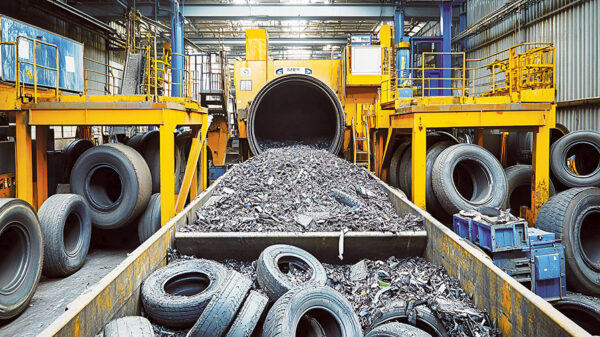North American recyclers continue to recycle the majority of the post-consumer plastic recovered for recycling. Recycling of plastics in North America has risen approximately 8 percent since 2017. However, the recycling industry faces ongoing challenges, according to a 2019 survey sponsored by the Association of Plastic Recyclers (APR), the Foundation for Plastic Recycling and the American Chemistry Council (ACC).
The 2019 U.S. Post-Consumer Recycling Data Report marks the first year the major plastic categories have been reported together in one report. These are some of the developments toward more comprehensive reporting on the state of plastic recycling.
Most of the material recovered for recycling in the United States in 2019 was purchased by reclaimers in the United States or Canada (87.9 percent combined) with just 12.1 percent exported overseas. Within the 12.1 percent of exports, bottle exports rose slightly by 26 million pounds; non-bottle rigid exports stayed flat; and post-consumer film exports dipped by 28.5 million pounds.
The 2019 U.S. Post-Consumer Plastic Recycling Data Report, based on surveys by Stina Inc. and NAPCOR, presents the findings of the major plastic categories recovered for recycling, by destination, with changes over time. In 2019, a total of 5,094 million pounds of post-consumer plastic sourced in the United States was recovered for recycling. Post-consumer plastics in the study included bottles, non-bottle rigid plastics, film, and other plastic but not foam.
In aggregate, recycling of bottles, non-bottle rigid plastic and film declined by 27 million pounds in 2019 or 0.5 percent. Compared to 2018, the largest increase in recycling in 2019 was among non-bottle rigid plastics (45.9 million pounds) and the largest drop in recycling was in PET bottles (39.3 million pounds). Although film plastic overall declined, there was an increase in film recovered for recycling from retail and agricultural sources. Plastic bottles continued to make up the majority of the plastic recovered for recycling at 55.2 percent, with non-bottle rigids accounting for 25.3 percent, film 19.2 percent, and other plastic, excluding foam, making up the remainder at 0.3 percent.
“Flat or declining recycling rates are a sign that the system needs support. Declines in mature recycling streams, such as PET and HDPE bottles, make brand company commitments to increased recycled content even more challenging. There are many opportunities to support continued growth in film and non-bottle rigid recycling as well as turn the course for bottles by focusing on what recyclers need to succeed as they are the engines of the circular economy,” said Steve Alexander, APR’s president and CEO. “Our modes of commerce and consumption are changing and our system of recovering resources must change too. Collection of quality material is essential for recyclers to produce quality feedstock at lower environmental and economic costs.”
“Companies across the plastics value chain are deeply committed to transitioning to a circular economy, and we’re pleased to see innovations and investments in everything from designing for recycling to modernizing our plastics recycling infrastructure,” said Joshua Baca, ACC’s vice president of plastics. “We look forward to working with policymakers, our business partners and other stakeholders to accelerate the shift toward circularity.”
Click here (https://circularityinaction.com/2019PlasticRecyclingData) for access to the data dashboard and the full data report.






